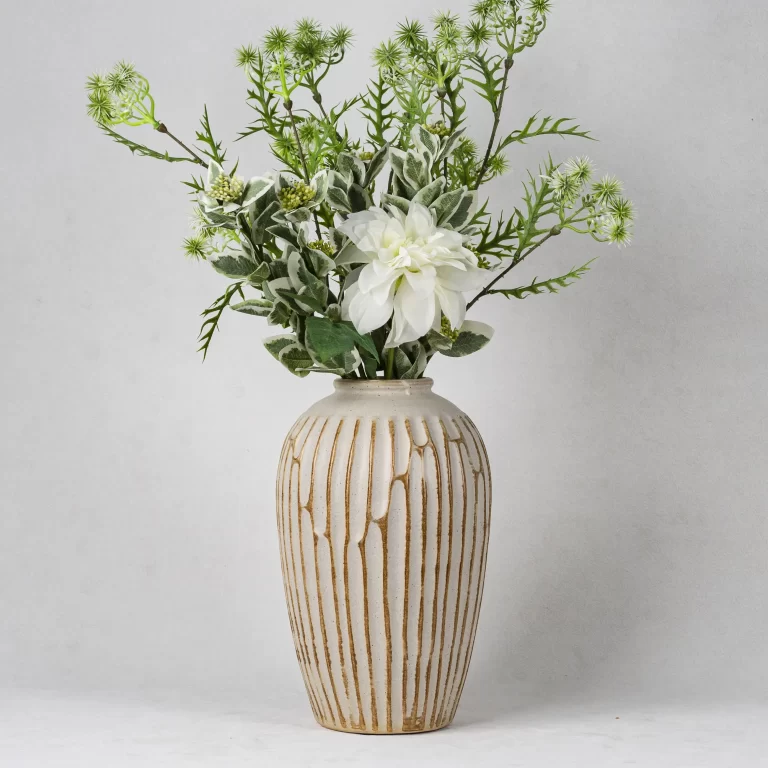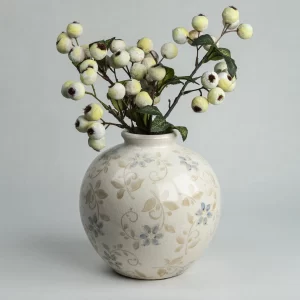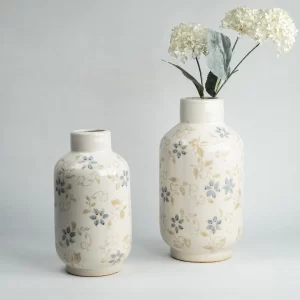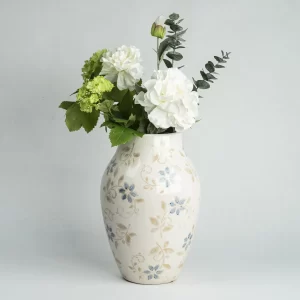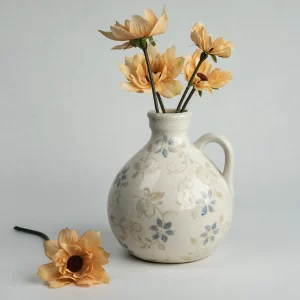In the colorful world of decorative ceramics, each piece is more than just a visual delight; it’s a testament to craftsmanship and creativity.
En tant que professionnel Fabricant de décors en céramique, in the following discussion, we’ll take you deep into the decorative ceramic manufacturing process, revealing every detail and technique involved. Let’s appreciate the charm of this ancient art form together.
What are Decorative Ceramics?
Decorative ceramics are works of art made from clay or ceramic materials, designed primarily for aesthetics rather than practicality. These objects are often intended to enhance the visual appeal of a space, adding elegance, creativity, and style to both indoor and outdoor settings.
These ceramic pieces come in a variety of forms, including vases, figurines, sculptures, wall hangings, and decorative pots. They may feature intricate patterns, vibrant glazes, hand-painted designs, and even intricate moldings, all of which enhance their decorative value.
Raw Materials: The Foundation of Ceramics
The creative journey of decorative ceramics begins with choosing the right clay, a crucial step that influences the texture, durability, and color of the final piece. Each type of clay has a unique material composition that makes it suitable for different types of decorative ceramics.
- Pottery: Terracotta is a porous, soft material typically made from a mixture of clay, silica, and aluminum oxide. Its composition makes it easier to work and well-suited for handcrafting, making it commonly used to create colorful, intricately crafted decorative objects.
- Grès : Stoneware is a denser, stronger clay made from a mixture of silica, feldspar, and other minerals. It is fired at higher temperatures than pottery, resulting in a durable, non-porous surface. This material’s durability makes it ideal for larger, heavier objects, such as sculptures and decorative vases.
- Porcelaine : Porcelain is a fine, high-quality clay prized for its smooth texture and delicate translucent appearance. It is primarily composed of kaolin (a pure clay) blended with feldspar and quartz. This combination creates an extremely smooth, delicate material that can be molded into intricate shapes.
Designing the Ceramic Piece
Before shaping the clay, artists and manufacturers often begin by designing their ceramic creations. This is a crucial step in the process, as it determines the final look and feel of the piece. The design phase involves creating sketches, digital drawings, or 3D models to help visualize the size, shape, and decoration of the ceramic piece.
- Handcrafting: This is the most traditional method of shaping clay, using the hands and simple tools to create ceramic pieces. Common techniques used in handcrafting include coiling (rolling the clay into coils and stacking them) and pinching (kneading the clay with the fingers).
- Throwing: For more symmetrical or rounded objects, such as bowls or vases, a potter’s wheel is typically used. The potter places the clay in the center of the wheel and, as the wheel rotates, shapes it by applying pressure and manipulating the material.
- Sculpting: For more uniform or complex shapes, molds are often used. Liquid clay (slip) is poured into the mold, left to solidify, and then removed for cleaning.
Shaping the Clay: Creating the Form
Once you have your raw materials and design ready, it’s time to start shaping it. There are many ways to create decorative ceramics, each requiring different skill levels and techniques:
Drying the Piece
After a ceramic piece is formed, it needs to dry. This step is crucial as it prepares it for the first firing. The piece needs to air dry at room temperature, which typically takes several days, depending on its size and thickness. Drying must be slow and even, as rapid drying can cause cracking or warping.
Cuisson de bisque
Once the clay has dried sufficiently, it’s time for the first firing, known as bisque firing. The clay is placed in a kiln and heated to high temperatures—typically around 1,000 to 1,200°C (1,832 to 2,192°F). This firing process removes all moisture from the clay and transforms it into a more durable, harder material called bisque.
At this stage, the ceramic is still porous and can absorb glaze, but it’s strong enough to handle the subsequent steps in the process.
Applying Glaze or Decoration
A hallmark of decorative ceramics is the use of glazes, which impart color, texture, and sheen to the ceramic. Glazes come in a wide variety, ranging from glossy to matte, transparent to opaque, and can even be used to create intricate patterns. Manufacturers often experiment with different glazes to achieve the desired effect or finish.
In addition to glazes, decorated ceramics may also feature hand-painted designs, gold leaf embellishments, or intricate carvings. These decorative elements enhance the piece’s beauty, making it a unique work of art.
Cuisson de glaçage
After glazing, the ceramic piece is fired again in the kiln. This second firing, called the glaze firing, takes place at a higher temperature than the bisque firing (typically around 1,200°C to 1,400°C or 2,192°F to 2,552°F). This high temperature melts the glaze and fuses it with the ceramic, creating a durable, smooth surface.
Special effects created by glazes or finishes, such as color variations, textures, and metallic luster, are created during this stage. The glaze firing process is crucial, ensuring both the beauty and durability of the ceramic piece.
Cooling and Finishing Touches
After the glaze firing is complete, the ceramic is slowly cooled. This cooling process must be gradual to prevent cracking caused by thermal shock. After cooling, the ceramic piece is inspected for imperfections and any necessary finishing is performed.
Some pieces may undergo additional processing, such as polishing, adding decorative elements like gold or silver leaf, or applying unique finishes like matte or satin coatings.
Contrôle de la qualité
Finally, each piece undergoes a rigorous quality control inspection before being sold or shipped. This step ensures that all decorative ceramics meet the necessary standards of quality and durability. Any piece that does not meet these standards is either reworked or discarded.
Conclusion
The birth of a ceramic is a romance of people fighting against the soil.
The creation of decorative ceramics is a laborious and time-consuming process that requires skill, precision, and artistic vision. From selecting the right clay and shaping it, to applying delicate glazes and firing it to perfection, every step is crucial to ensure the final product is both beautiful and durable.
About SANTAI Ceramic Decor Manufacturer

SANTAIi is a leading manufacturer of decorative ceramic products. By combining traditional craftsmanship with modern production technology, we supply high-quality ceramic decorative items in large quantities worldwide.
Our team of skilled artisans, advanced machinery, and kiln technology enable us to produce a wide range of decorative ceramic items, including vases, figurines, sculptures, pots, and more.
At Santai, we prioritize quality control at every step of the production process, ensuring that every piece meets international standards for durability and finish. From concept design to final glazed product, we offer end-to-end solutions. Contact us today!
Nous contacter
N'hésitez pas à nous appeler+86-13828361008
N'hésitez pas à nous appelersale01@santai.cn
N'hésitez pas à nous contacterZone industrielle de Ruyi, Chaozhou, Guangdong, Chine

